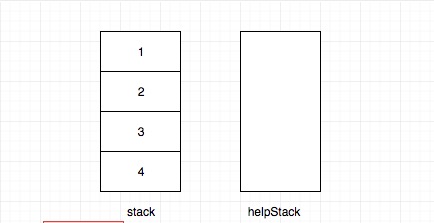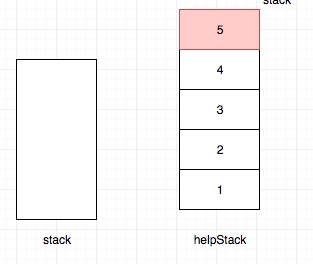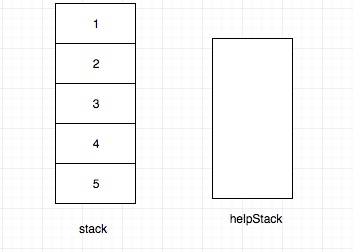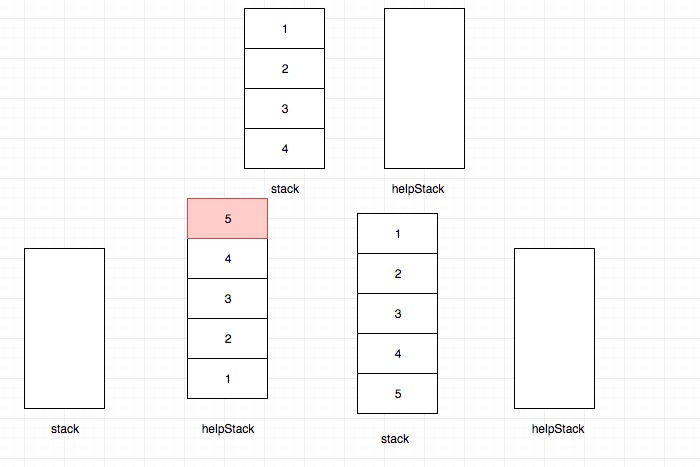https://leetcode.com/problems/implement-queue-using-stacks/description/
Implement the following operations of a queue using stacks.
push(x) -- Push element x to the back of queue.
pop() -- Removes the element from in front of queue.
peek() -- Get the front element.
empty() -- Return whether the queue is empty.
Example:
MyQueue queue = new MyQueue();
queue.push(1);
queue.push(2);
queue.peek(); // returns 1
queue.pop(); // returns 1
queue.empty(); // returns false
Notes:
You must use only standard operations of a stack -- which means only push to top, peek/pop from top, size, and is empty operations are valid.
Depending on your language, stack may not be supported natively. You may simulate a stack by using a list or deque (double-ended queue), as long as you use only standard operations of a stack.
You may assume that all operations are valid (for example, no pop or peek operations will be called on an empty queue).
这道题目是让我们用栈来模拟实现队列。 我们直到栈和队列都是一种受限的数据结构。 栈的特点是只能在一端进行所有操作,队列的特点是只能在一端入队,另一端出队。
在这里我们可以借助另外一个栈,也就是说用两个栈来实现队列的效果。这种做法的时间复杂度和空间复杂度都是O(n)。
由于栈只能操作一端,因此我们peek或者pop的时候也只去操作顶部元素,要达到目的 我们需要在push的时候将队头的元素放到栈顶即可。
因此我们只需要在push的时候,用一下辅助栈即可。 具体做法是先将栈清空并依次放到另一个辅助栈中,辅助栈中的元素再次放回栈中,最后将新的元素push进去即可。
比如我们现在栈中已经是1,2,3,4了。 我们现在要push一个5.
push之前是这样的:
然后我们将栈中的元素转移到辅助栈:
最后将新的元素添加到栈顶。
整个过程是这样的:
- 在push的时候利用辅助栈(双栈)
- 语言支持:JS, Python
Javascript Code:
/*
* @lc app=leetcode id=232 lang=javascript
*
* [232] Implement Queue using Stacks
*/
/**
* Initialize your data structure here.
*/
var MyQueue = function() {
// tag: queue stack array
this.stack = [];
this.helperStack = [];
};
/**
* Push element x to the back of queue.
* @param {number} x
* @return {void}
*/
MyQueue.prototype.push = function(x) {
let cur = null;
while ((cur = this.stack.pop())) {
this.helperStack.push(cur);
}
this.helperStack.push(x);
while ((cur = this.helperStack.pop())) {
this.stack.push(cur);
}
};
/**
* Removes the element from in front of queue and returns that element.
* @return {number}
*/
MyQueue.prototype.pop = function() {
return this.stack.pop();
};
/**
* Get the front element.
* @return {number}
*/
MyQueue.prototype.peek = function() {
return this.stack[this.stack.length - 1];
};
/**
* Returns whether the queue is empty.
* @return {boolean}
*/
MyQueue.prototype.empty = function() {
return this.stack.length === 0;
};
/**
* Your MyQueue object will be instantiated and called as such:
* var obj = new MyQueue()
* obj.push(x)
* var param_2 = obj.pop()
* var param_3 = obj.peek()
* var param_4 = obj.empty()
*/Python Code:
class MyQueue:
def __init__(self):
"""
Initialize your data structure here.
"""
self.stack = []
self.help_stack = []
def push(self, x: int) -> None:
"""
Push element x to the back of queue.
"""
while self.stack:
self.help_stack.append(self.stack.pop())
self.help_stack.append(x)
while self.help_stack:
self.stack.append(self.help_stack.pop())
def pop(self) -> int:
"""
Removes the element from in front of queue and returns that element.
"""
return self.stack.pop()
def peek(self) -> int:
"""
Get the front element.
"""
return self.stack[-1]
def empty(self) -> bool:
"""
Returns whether the queue is empty.
"""
return not bool(self.stack)
# Your MyQueue object will be instantiated and called as such:
# obj = MyQueue()
# obj.push(x)
# param_2 = obj.pop()
# param_3 = obj.peek()
# param_4 = obj.empty()- 类似的题目有用队列实现栈,思路是完全一样的,大家有兴趣可以试一下。
- 栈混洗也是借助另外一个栈来完成的,从这点来看,两者有相似之处。



